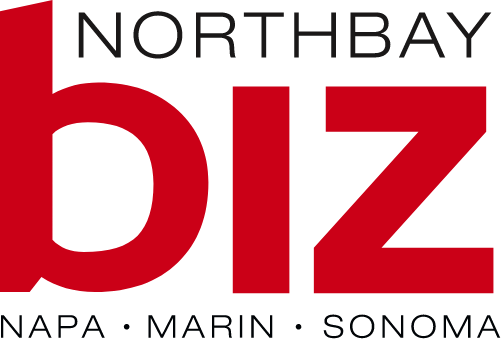
Asking young people to project years into the future and envision their retirement can be like asking them to look into a cloudy crystal ball. Retirement is so far away that it’s difficult to imagine. And yet, they have a unique advantage. Time gives them a chance to shape their future. If they start saving early, they’ll be free from financial worries when they’re ready to leave their working days behind, and they’ll have the resources to live the kind of life they choose. Planning decades ahead, though, comes with challenges, and saving for retirement is easy to push aside in favor of other more pressing priorities. Fidelity Investment’s 2022 State of Retirement Planning study reports that slightly more than half of Millennials are saving for retirement, which suggests that a substantial number have yet to consider it.
While planning for retirement early is a wise strategy, it can be a tough one. Matt Delaney, wealth advisor and managing partner at JDH Wealth Management in Santa Rosa, believes that the best time for young people to start saving for retirement is when they get their first job after college, but that clearly isn’t happening for many. They think they can kick the can down the road, he says, and do it later. Millennials frequently find that they have a job but don’t make much money, and they hope to start saving when they earn more. “I think that’s very, very common,” says Delaney, explaining that they deflect conversations about saving by saying that life is too expensive.
Changing that perception can be difficult. Inflation, student-loan debt and the impact of the coronavirus pandemic are just a few of the obstacles Millennials, aged 23 to 38, are facing, but with careful planning, it’s still possible to save. Delaney recommends starting small. Saving 15% of one’s earnings is ideal, but people who can’t manage that much can begin by saving 1%, although they need to move up to 15% sooner rather than later. If a 25-year-old saves $17 a week over 40 years, for instance, it adds up. “That to people is like Monopoly money,” he says. It’s not much per week, but small amounts accumulate over time and earn interest, making them meaningful in the long term. However, he says, “If they haven’t learned that concept yet, it’s very foreign.” He recalls meeting with the entire staff of a local company with 100 employees to explain the rationale, giving them a glimpse of how starting to save early in their careers can be beneficial in the future. Most young people don’t get financial literacy classes in high school or college and aren’t knowledgeable about many of the details of managing money, and it was a window of opportunity to educate them. “Once you explain it, they get it quickly,” he says.
Finding a path
The goal should be saving a minimum of $1 million for retirement or an amount equivalent to 50% of the amount earned over years of working, and so it’s easier if people start early. Delaney suggests starting with a savings account and then focusing on retirement savings. “You have to make sure you have emergency savings,” he says, and it’s best to have three to six months of cash available to use for unexpected occurrences, such as the loss of a job. To plan for retirement, they should start putting savings into a 401(k) when they’re 25 or 30, and for most people, their 401(k) at work is probably adequate, he says, assuming it’s a reasonable plan. He advises checking to find out if a company’s 401(k) offers a match. If a person isn’t participating in the company plan, they should make an effort to do so. “You have free money on the table that you’re potentially missing out on,” he says.

If young people want to invest in stocks to fund retirement, he suggests that they go to Vanguard or Charles Schwab, which are investment management companies that don’t require a large minimum. “That’s a great spot to start,” he says, because they have advisors who talk to clients on the phone and guide them through the process. He adds, however, that the stock market is best for someone who understands the movement of markets and is aware that investment is long term if it is to be productive. He recalls 2008, after Standard & Poor’s, a leading provider of financial indexes that evaluates the financial health of large American companies, lowered its ratings. It was at the beginning of the Great Recession, which lasted from December 2007 to June 2009, and the depressed economy led to a fall in the stock market and a decrease in the value of people’s investment accounts. Though the drop was a loss on paper rather than cash and had the potential to eventually rebound, some investors panicked, and, unable to wait out the downturn, they took their money out of the stock market and went to cash. Consequently, when the market recovered, they missed the upside and didn’t get the gains. In that situation, “Emotions often kick in and take over,” Delaney observes. In the stock market, however, people need to be in for the long haul. “There’s a risk-reward with the market,” he says. “There’s always risk with the stock market. If you don’t want to take a lot of risk, don’t take it.” He adds that stock portfolios should be diversified and positioned to protect the downside.
Buying a home is another strategy that pays off when it’s time to retire. Everyone needs a place to live, and the choice is whether to buy or rent. Robert Eyler, Ph.D., the Marin Economic Forum’s chief economist and professor of economics at Sonoma State University, explains that when you’re putting out money for a home, whether you’re paying rent or making mortgage payments, you’re paying for services. If you rent, you’re paying for services only, but if you buy, you get the wealth that a house and land provide as well. “Getting the additional wealth that a house provides is parallel to saving,” he says, explaining that even if homeowners are making mortgage payments, they’re also making an investment in savings, because the value of their homes increases. That’s the point of home ownership, he points out, observing that the beauty of it is that you’re saving while you’re paying for the cost of housing, which you’d have to pay anyway. In addition, if you pay off a mortgage by the time you retire, you won’t have to pay for housing when you make the transition to the fixed income that comes with retirement. He adds that the value of real estate doesn’t always go up, as demonstrated by drops in 2006 and 2010. “You need to get around it mentally and look at it as a long-term investment,” he says. “Housing prices rise over time, and the value will go up and down.”
Eyler adds that while buying a home is one way to save, having a retirement account, a pension fund or both are others. “One of the biggest challenges is getting people to save and save early,” he says, and it’s important because they’ll be able to rely on what they save later in life. However, he emphasizes that retirement is just one of the reasons to save, and it’s necessary to balance it with current needs.
Solving the financial puzzle
Finding the best places to put their money is a juggling act for young people new to the game. “Younger people in general struggle with the saving-spending tradeoff,” says Eyler. And while they need to save, if they put aside too much, it could stop them from doing some of the other things they should be doing, such as starting a family. On the other hand, if they save too little, they’re exposed to the risk of not having the resources they need if they experience an unexpected event, such as the loss of a job or a medical emergency.
Delaney finds that one of the main reasons young people don’t save is the snowball effect of credit card debt. He points out that it’s easy for them to get their first credit cards in college, and sometimes they start spending freely. “Younger generations don’t see people paying with cash anymore,” he says, and while it might be a common practice, he reports that people spend 20% more when they use credit cards. “Get your credit card debt paid off,” he says. “How can you get ahead if you have $5,000 in credit card debt, and you have a savings account that’s only making 2%?”
One of the problems, he points out, is that most young people don’t understand compound interest and aren’t aware that credit card interest is usually calculated daily, so the outstanding balance is continually growing and subject to more interest. If an individual has more than one card with an outstanding balance, he suggests refinancing to get them all into one account with an interest rate that’s less than 10%. Credit card interest tends to be high, in some cases more than 20%, and so Delaney suggests considering a middleman like SoFi, which determines the interest rate based on an individual’s credit score. “If they can get 12%, that’s a win,” he says. Student loan debt is also an issue, but student loans usually have a low interest rate, so it’s better to focus on paying off credit card balances first.
Another reason for not saving is the cost of living. “One of the biggest excuses I hear is, ‘You don’t know my situation. I can’t afford it,’” he says. He recalls going over expenses with an individual who went to Starbucks regularly, thinking that it was only coffee. Delaney observes that people want instant gratification, and so they spend on things that aren’t necessary. “We drop $100 for dinner out without even thinking about it,” he says. He advises prioritizing needs over wants, and if you save what you need to save and have money left over, then spend on wants. He believes people need to take off the rose-colored glasses and look at finances realistically. “People need to get their heads out of the sand and look at needs, wants and wishes,” he says, because they usually find that many needs aren’t really needs at all.
In the middle
Delaney adds that people preceding Millennials, ages 38 to 54, could also benefit from hitting the pause button and identifying their expenses. They might be saving for their children’s college education rather than retirement, and while that’s important, it shouldn’t be their top priority. “You have to put yourself first when it comes to retirement. If you don’t meet your retirement goals, what are you depending on, Social Security?” he asks, observing that it becomes a problem if one hasn’t saved enough. He finds that expenses are the easiest thing to change but the most difficult to do, but if someone is doing a poor job of saving for retirement, they should prioritize their needs and figure out what they need to fund most and how they’re going to do it.

Many people in this age group, which is sometimes referred to as the Sandwich Generation, are trying to help aging parents, while also meeting the needs of their own families. If they have parents who need financial help, he suggests having a discussion with siblings if they have them. “If you can have that discussion, you can make a plan to take care of it,” he says. He points out that talking about finances is often taboo, but the number-one stress area for married couples is finances. Having an open discussion is important for one’s financial health, however, and can be powerful. Regardless of other demands, they should find ways to keep saving. Anyone can put money into a 401(k) up to 59 years and 6 months of age, and after that they can put funds into taxable accounts. They, like all age groups, should also be sure to have emergency savings.
For people whose children are grown who are getting closer to retirement, he suggests sitting down with a financial professional to evaluate their salary and savings and look at their financial outlook. “The number one worry people have is running out of money,” he says. Going from a steady paycheck to living on assets and taking Social Security is a big change, and so people need to find out what they have and what they need before that day arrives.
Finances 101
“There’s a big belief that we need to do more financial training,” says Eyler, who adds that it would fill a knowledge gap. He finds that most Millennials understand the basics, but they don’t necessarily understand how income paths work. “It’s a pretty mixed bag,” he says, explaining that some young people become literate in specific ways. He gives bitcoin as an example. It gets their interest, and they focus on that one area, but don’t understand how different economies work.
His most important advice is to have a plan for saving, and he adds that getting help from a financial professional is a good way to start for someone without experience. He observes that younger people think they’re going to live forever and have lots of time, but the sooner they start saving, the better off they’ll be when the time comes to retire. “Having a plan is a huge step forward,” he says. When you save, he adds, you plan for contingencies, including retirement.
“A class in budgeting and credit card debt in high school would be great,” says Delaney, but he recognizes that most people have to learn on their own and points to good apps as one way young people can become more knowledgeable. However they do it, the most important thing is for people to step back and identify how they’re spending their money. He recently visited Las Vegas and saw how much people were spending on gambling. “It was shocking, the amount of money people were throwing away,” he says, speculating that most of them couldn’t afford to lose it. “Look at where your money’s going and come up with priorities,” he advises. “The reward in the future is fantastic.”
Types of Retirement Savings Plans
Several types of savings funds are available for retirement savings.
A 401(k) is a type of retirement plan that a business offers to its employees. Contributions come out of one’s paycheck before income tax is deducted, lowering the amount of taxable income. Some companies offer matching funds, which is in addition to the employee’s contribution, so it is essentially free money. Self-employed individuals couples running a business together can open a solo 401(k).
A traditional IRA (Independent Retirement Arrangement) is a personal saving plan that may allows an individual to claim a tax deduction, depending on his or her filing status and income.
Simple IRA plans—Savings Incentive Match Plan for Employees—allow employers as well as employees to contribute to traditional IRAs. Simple IRAs are designed for small businesses with 100 or fewer employees.
Roth IRAs don’t allow tax deductions, but qualified withdrawals may be tax-free.
To learn more about retirement plans, go to irs.gov.
Choosing a Financial Planner
Financial planners can help clients find ways to save for retirement by analyzing their budgets, helping them develop long-term and short-term saving strategies and reviewing their retirement goals and helping them to make a plan to attain them. Most Millennials will need a financial planner who charges a flat fee, as wealth management firms require minimums that are likely beyond their reach. Certified financial planners are professionals with extensive education and training and high ethical standards.
To find a financial planner, Investopedia suggests doing the following:
Determine how much advice and what services you need and how much autonomy you’re willing to give to a professional.
Look for professional certifications and designations after an advisor’s name, such as CFP.
Decide on the fee structure you’re comfortable with. It could be fee or commission-based, or it could be based on the value of assets managed.
Ask friends and families for referrals, or go to the National Association of Financial Planners website to find someone near you. Everyone’s needs are different, so don’t feel pressure to use a particular financial planner just because someone you know has made a recommendation.
Run a background check, using a tool such as the Financial Industry Regulatory Authority’s (FINRA) BrokerCheck service.
Investopedia
Budgeting Apps
Technology can help young people who are creating budgets for the first time, and they can choose from a variety of apps to get guidance and support in meeting their personal finance and money management needs. “The best budget tool for you is the one you’ll actually use, whether that’s a full-featured app, a tricked-out spreadsheet or more manual means,” says Forbes Advisor, which recommends the following eight apps:
Personal Capital
Mint
YNAB (You Need a Budget)
PocketGuard
Goodbudget
Stash
Honeydue
Digit
Forbes Advisor



